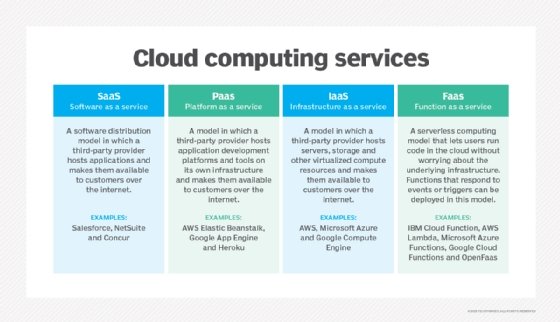Vital Tips for LinkDaddy Cloud Services: Optimizing Your Universal Cloud Service Approach
Vital Tips for LinkDaddy Cloud Services: Optimizing Your Universal Cloud Service Approach
Blog Article
Simplify Your Facilities With Cloud Provider
As organizations navigate the ever-evolving landscape of innovation and data management, the role of cloud services in streamlining infrastructure has ended up being significantly prominent. Exactly how can organizations effectively navigate this shift and genuinely open the potential of cloud services for streamlining their infrastructure?
Benefits of Cloud Solutions
Cloud solutions offer a streamlined approach to managing IT infrastructure, providing services with versatility, cost-efficiency, and scalability. One of the key advantages of cloud solutions is the scalability they provide.
Furthermore, cloud solutions remove the requirement for services to buy pricey software and hardware. This cost-efficiency is a considerable benefit, specifically for little to medium-sized enterprises looking to decrease in advance expenses. By utilizing cloud services, services can access high-quality IT sources without the substantial price connected with standard facilities arrangements.
Furthermore, cloud services give companies with the adaptability to access their data and applications from anywhere with a web link. This level of access improves partnership amongst groups, enables remote work, and boosts total efficiency. The versatility offered by cloud solutions empowers services to adjust rapidly to changing market problems and customer needs.
Expense Cost Savings and Scalability
In addition to the functional benefits highlighted previously, the combination of cloud solutions right into a business's facilities brings forth substantial cost savings and enhanced scalability. Cloud services offer a pay-as-you-go version, allowing companies to range sources up or down based upon existing demands, thereby preventing the prices connected with maintaining excess capacity. This flexibility enables firms to adjust promptly to rising and fall needs without sustaining unneeded costs.
Additionally, cloud solutions get rid of the requirement for upfront investments in hardware and software, reducing capital investment. Business expenses are additionally reduced as business no longer need to manage and maintain physical servers, bring about reduced power consumption and IT staffing expenses. In addition, cloud solutions give automated updates and maintenance, making sure that the framework remains secure and current without requiring hands-on treatments.
Boosted Safety And Security Actions
When integrating cloud services right into a company's facilities to make certain and protect delicate data conformity with market regulations,Implementing rigorous protection procedures is vital. Cloud solution providers offer improved security attributes such as data security, firewall software protection, and multi-factor verification to mitigate cybersecurity dangers. Security helps shield data both at remainder and en route, guaranteeing that only accredited individuals can access sensitive details. Firewall programs serve as an obstacle between external risks and interior networks, tracking and controlling outgoing and inbound network website traffic. Multi-factor authentication includes an extra layer of security by requiring users to offer multiple forms of confirmation before accessing the cloud solutions.
Additionally, normal security audits and compliance assessments assist determine vulnerabilities and make certain adherence to industry requirements. Business can additionally gain from features like computerized safety updates and real-time danger tracking offered by cloud service providers. By focusing on security procedures and remaining aggressive in attending to potential dangers, businesses can with confidence utilize cloud services while shielding their important information from unapproved access or violations.
Transitioning to Cloud Facilities
To efficiently integrate cloud solutions right into a company's facilities, an organized look at this site approach that attends to the change towards cloud-based options is crucial. Transitioning to shadow infrastructure includes cautious preparation and implementation to guarantee a smooth migration procedure. The initial step is to analyze the current infrastructure and figure out which systems and applications are appropriate for movement to the cloud. This examination should think about aspects such as information you could check here level of sensitivity, conformity needs, and performance requirements.
Once the analysis is full, a movement method must be established. This technique ought to outline the timeline, sources, and duties for moving each component to the cloud. It is vital to interact this plan plainly to all stakeholders to make sure alignment and minimize disturbances throughout the shift.
During the movement screening, process and monitoring are important to determine and address any concerns without delay. Normal checkpoints ought to be established to track progress and make needed modifications. Additionally, training for workers on utilizing cloud solutions ought to be supplied to ensure a successful transition and make the most of the advantages of the brand-new facilities.
Ideal Practices for Cloud Adoption
Effective adoption of cloud solutions hinges on the strategic positioning of business purposes with technological capabilities and business readiness. To make sure a smooth shift to the cloud, companies must begin by performing an extensive analysis of their current facilities and recognizing which workloads are best fit for cloud movement. It is important to entail key stakeholders from various departments in the decision-making process to obtain buy-in and address any type of worries early Click This Link on.
Another finest technique for cloud fostering is to focus on safety and security and conformity. Organizations has to carefully assess the protection measures provided by cloud provider and ensure that their data is secured according to sector criteria and regulatory requirements. Carrying out durable information security, access controls, and routine safety audits can aid mitigate risks connected with cloud adoption.

Verdict

As organizations navigate the ever-evolving landscape of technology and data monitoring, the function of cloud solutions in simplifying framework has ended up being significantly prominent - linkdaddy cloud services press release. Exactly how can organizations efficiently navigate this change and really open the possibility of cloud solutions for simplifying their facilities?
Cloud services use a streamlined technique to managing IT framework, providing organizations with flexibility, cost-efficiency, and scalability. By using cloud services, services can access high-quality IT resources without the large rate tag connected with traditional framework configurations.
To make certain a smooth transition to the cloud, organizations should start by performing a thorough evaluation of their present facilities and identifying which workloads are best suited for cloud movement.
Report this page